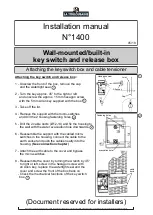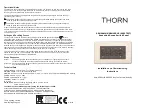
IBM System Networking RackSwitch G8264
13
Low-profile, high-performance, 48/64-port 10-GbE switch needed to perform aggregation function
per rack. Figure 4 shows port aggregation, and Table 5 lists the features and benefits.
Figure 4. Port aggregation
Table 5. Features and benefits
Features
Benefits
Line-rate, non-blocking, all 64-ports
Supports massive compute and virtualization workloads
Deterministically low latency
Faster application response times
Support for IGMP Snooping and L3 forwarding
Enables high-bandwidth, low-latency multicast
applications
Standards-based Layer 2/3 protocols; industry standard
CLI
Interoperates with existing network; no learning curve
Rack-optimized server aggregation logical design
The design goal is to have the IBM RackSwitch G8264 (10 GbE) switch at the distribution layer and
the IBM RackSwitch G8000/G8052 (1 GbE) at Edge/Access.
The G8264 is also ideal at the distribution layer when you are looking to aggregate connections for
access layer switches like the G8000 or G8052 which support forty-eight 1-Gb ports to the servers
and four 10-Gb uplinks. In either scenario, the G8264 provides exceptional value by providing the
following support:
Up to 12 G8000/G8052 switches (576 servers) when using the four 10 Gb uplinks per
G8000/G8052, while still having the four 40 Gb uplinks from the G8264 to the core
Up to 16 G8000/G8052 switches (768 servers) when using the four 10 Gb uplinks per
G8000/G8052 and using 10 Gb SFP+ break-out cables in the four 40 Gb ports with no uplinks to
a core
Keep in mind the following additional details:
Logical configuration: Configure G8000/G8052 for Layer 2 and apply static routes for L3
forwarding
Full Layer 2/3 Feature Set: STP, MSTP, RSTP, PVRST+; RIP v1/2, static routes, OSPF
Security: 802.1X; RADIUS/; Wire Speed ACLs, SSH v1, v2; HTTPS Secure BBI






































